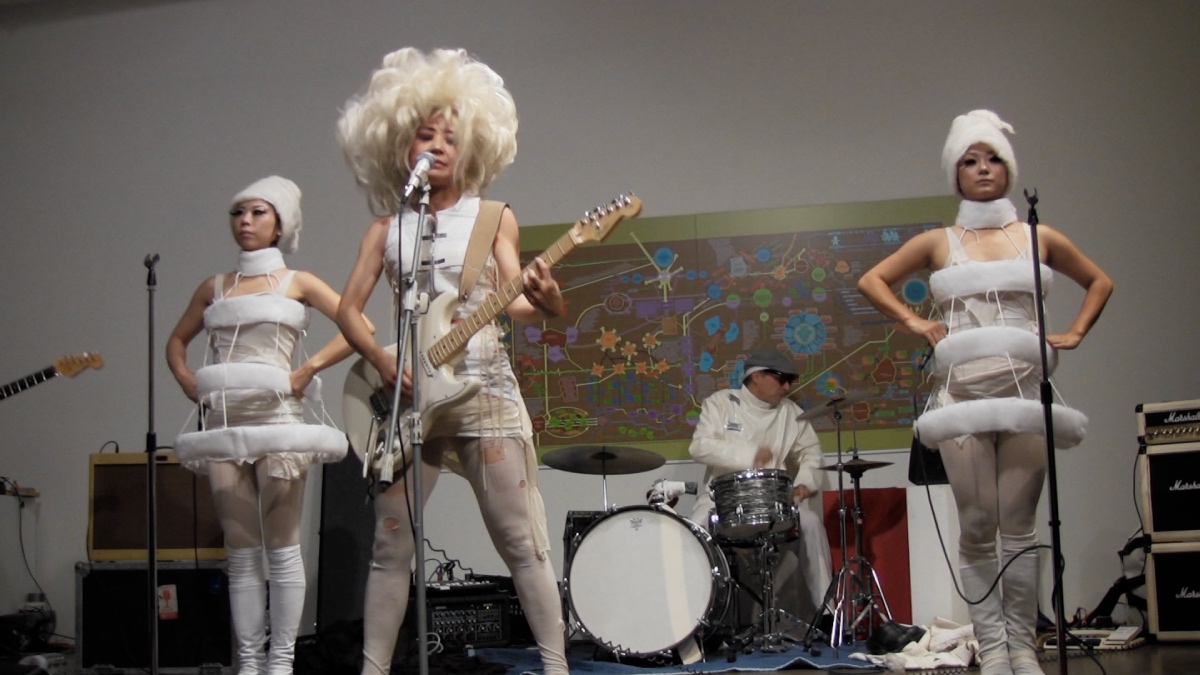Beginning with its titular question before falling down the rabbit-hole of meta-textual references, “Who is Lun*na Menoh?” works well as a primer for the Japanese-born conceptual artist, fashion designer, and musician. Adopting a triptych structure—which first establishes a portrait of Menoh before deconstructing the very nature of documentary—Jeff Mizushima’s film is, in the end, more about the nature of filmmaking, and the blurring of reality and fiction, then about the singular artist. Equal parts fascinating and eye-rolling, “Who is Lun*na Menoh” never exactly answers its central question, but after having learned about the artist, that is kind of the point.
Built essentially as a call and response, the first section ostensibly tracks Menoh’s creative process in the lead-up to her 2008 fashion show “Couture Salvage,” intercutting fly-on-the-wall footage of Menoh creating fashion pieces, with contextual interviews from friends, family, and admirers—including “Yo Gabba Gabba” host Lance Robertson and the band Sparks. The first thirty or so minutes are an interesting, if nevertheless standardized portrait of Menoh moving through her avant-garde musical career into her visual art and, finally, her fashion design. Yet, as the fashion show wraps up and end-credits roll, we abruptly cut to 2019 with Mizushima showing a first edit to a dissatisfied Menoh.
READ MORE: Fall 2021 Movie Preview: 60+ Must-See Films
Essentially taking the film away from him, the narrative switches subjects—tracking Mizushima as he tries to retain creative control on his documentary as Menoh works to reshoot everything. Constantly changing the structure of the film, the second portion of “Who is Lun*na Menoh?” is dominated by Mizushima explaining the meta-ness of his new approach—a documentary about him making a documentary about his initial documentary. The final third is, perhaps, left unspoiled, though if you’ve seen Sarah Polley’s “Stories We Tell” you get the idea, as it questions the very nature of the non-fiction form, recasting the entire film that came before it, and upending the relationship between truth and fiction.
“Who is Lun*na Menoh?” works in fits and starts, establishing the relationship between her artwork and her worldview before eventually collapsing in on itself, as Mizushima twists into knots explaining the overall self-referentiality of his project. Within this construction, Mizushima serves as both director and protagonist, casting Menoh as an elusive figure that hovers around the fringes of the film, trying to re-assert her own authorial voice on what is supposed to be a detached objective object. This push-pull between chronicler and subject is interesting—as Menoh fights for the authority to tell her own story—yet the constant self-awareness wears a bit thin, as scene after scene sees Mizushima explaining the insular concept of his ever-developing film to increasingly perplexed subjects.
By the time he’s convinced a cameraman to give him Menoh’s footage so that he can edit it into his own cut, I found myself wishing for something a bit more standardized—willing to explore, historicize, and contextualize Menoh’s artistry against the popularized forms that she so aggressively pushed back against. Instead, Mizushima, and Menoh, turn the camera back on the documentarian with diminishing returns, more interested in deconstructing the nature of hagiographic documentaries than exploring why Menoh is such a revered artist.
When the final act finally comes, as Menoh and Mizushima reveal the overall conceptual design, it reads less like a late-act twist—obviously what they seem to be going for—then an inevitability, as we return to various scenes with added context. Menoh works to claim her own narrative against the forces that would seek to define and codify her own artistry. But, in doing so, we never get a sense of who Menoh is as an artist. Who is Lunn*na Menoh? An artist, provocateur, and, also, a film too in love with its own schematic design. [C+]





